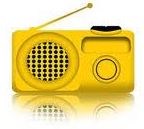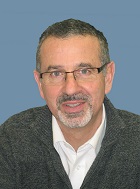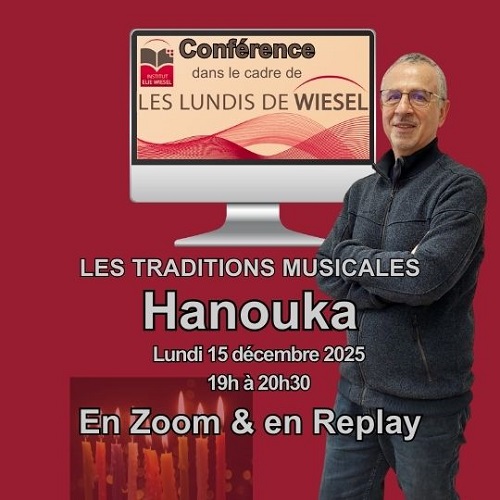
A radio program from the European Institute of Jewish Music, hosted by Hervé Roten
MUSIQUES JUIVES D’HIER ET D’AUJOURD’HUI – DECEMBER 20, 2016, JUDAÏQUES FM (94.8), 21H05. Radio program in French
In the second half of the 19th century appeared an interest for popular and exotic music. With the emergence of the universal expositions, the extension of British and French colonial empires, the Orientalism was in fame. Debussy was the first to be inspired by this music of oral tradition and to invent a music that broke up with the classical Western language. He considerably influenced the composers of the following generation (Bartók, Stravinsky, de Falla, etc.), who established their own musical language based on the popular music of their regions.
We also know the attachment of Ravel to popular music from various cultures. Therefore in 1910, Ravel put on music seven popular songs – in which one is in Yiddish: Mejerke, main Suhn (Meyerke, my son) – for a contest organized by the Maison du Lied in Moscow.
Still in the 20th century, Russian Jewish musicians and researchers got interested in popular Jewish music. In 1900, Joël Engel (1868-1927) started to put on sheet music and to give concerts of folkloric Jewish songs. Encouraged by the composer Nikolaï Rimski-Korsakov, this movement attracted young Jewish musicians – such as Lazare Saminsky, Solomon Rosowsky, Aleksandr Krein, or Joseph Achron – and becames in 1908 the “Popular Jewish Music Society” in St-Petersburg. Between 1911 and 1914, this society organized various ethnographic expeditions under the direction of Sh. An-Ski (1863-1920). Engel took actively part in this collect where 500 cylinders were recorded with approximately 1000 songs. Having a lively and representative material of diversity of Jewish music, these young composers wished to embody a 3000 year old dream: recreate a Jewish music. But for An-Ski, the most important was not the material which was used, but the way the bricks were disposed to build a church, a synagogue. In other words, for An-Ski, the (Jewish) content was more important than the (non-Jewish) format.
This idea was taken by Ernest Bloch, often considered as the cantor of Jewish art music. Between 1912 and 1916, Bloch wrote in particular Three Jewish Poems (1916), Three Psalms (1912-1914), one symphony Israël (1912-1916), Schelomo, Hebraic rhapsody for cello and orchestra (1916). Bloch did not consider himself as an archeologist of Jewish music. He wrote a music nourished by Hebrew spirit and the love of the Bible.
Darius Milhaud, who defined himself as “aFrench man born in Aix and of Jewish confession”, is also the author of an important Jewish work. In particular: Jewish Poems (1916), the opera Esther of Carpentras (1925-1927), his 6 popular Hebraic songs (1925), his Sacred Service for the morning of Shabbat (1947), the oratorio David composed for the third millennium of Jerusalem in 1955, and finally, his last work, the cantata Ani Maamin (1974) with words by Elie Wiesel, who tells the horrors of Auschwitz, Treblinka and Maidanek.
Linked to this period of the holocaust, we have to say the names of Viktor Ullman and Simon Laks. The Drei jiddische Lieder (3 yiddish melodies) by Viktor Ullman have been written in Terezin in 1944, a few months before his extermination in Auschwitz. These three beautiful works sound as a tribute to the Jewish culture at the time of its destruction. Simon Laks was also sent in Aushwitz in July 1942. As a musician, he survived more than two years, at the head of the concentration camp’s orchestra. In 1947, Laks wrote 8 Popular Jewish Songs, then in 1961 a lament for Jewish villages, to the memory of the East-European Jews who were murdered.
In 1948, facing a growth of antisemitism in USSR, the Cristian composer Dimitri Chostakovitch wrote a work called Of Popular Jewish Poetry (op. 79). The eleven songs of this cycle, which was created in 1955, two years after Stalin’s death, sound like a scream of rebellion against anti-Semitic hatred.
Also marked by Nazi barbarism, Joaquin Nin-Culmell (1908-2004) wrote in 1982 a cycle of Seis Canciones populares sefardies dedicated to the memory of all Jewish martyrs (« in memoriam omnium martyrum iudaeorum »). For this musical tribute, Nin-Culmell used six Judeo-Spanish melodies from the communities of Salonica, of the Balkans, from Bulgaria and Tetouan.
A brilliant program discussed with the pianist David Bismuth…
Listen to excerpts from the CD Hebrew Melodies for cello and piano
Buy the CD Hebrew Melodies for cello and piano
Listen to previous radio shows dedicated to classical Jewish music:
- Charles-Valentin Alkan, from Jewish faith to modernity
- The role of Jewish musicians in the 19th century in Paris: the case of Henri Herz (Vienna 1803- Paris 1888)
- Baroque Jewish music
- Fernand Halphen : a Jewish composer in the great war
- The Jewish work of Alexandre Tansman (1897-1986)
- Arnold Schönberg’s Jewish musical work
- Norbert Glanzberg – From popular songs to Jewish music
- Serge Kaufmann – a composer in search of his roots

Ethnomusicologist, he quickly developed an interest in the safeguard and digitization of archives, subjects he taught for several years in Reims and Marne-La-Vallée universities.
Author of many articles, books and recordings related to Jewish music, producer of radio programs, Hervé Roten is recognized today as one of the best specialists of Jewish music in the world.




